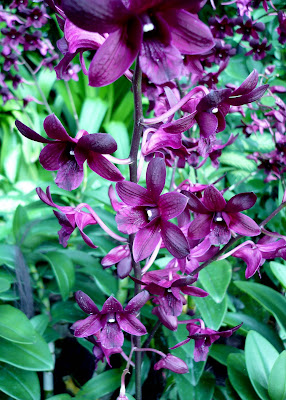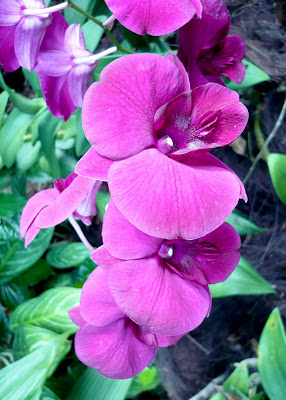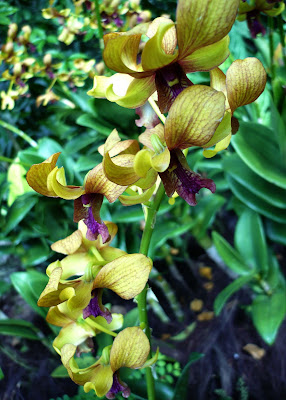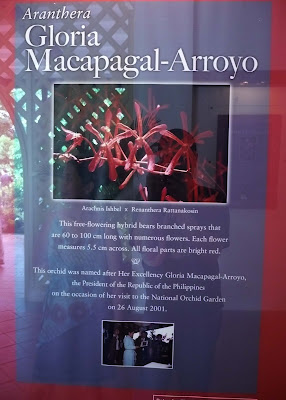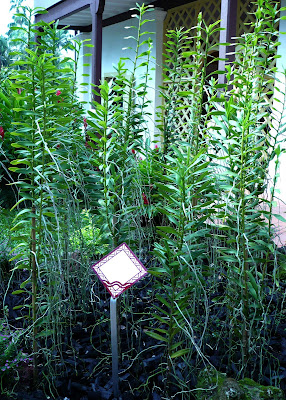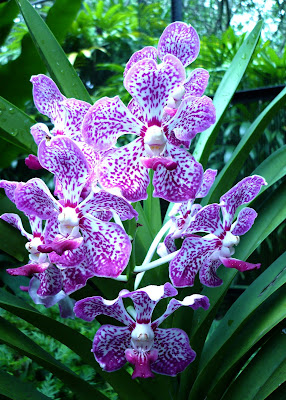
Located in the heart of the Singapore Botanic Gardens, the Cool House houses several species of plants usually found only in rainforests (of the montane kind). It has a collection of several upland orchids as well as very interesting carnivorous (or insectivorous) plants. Some of the plants are quite common in the Philippines and are usually found in places of not very high elevations like Bukidnon or Antipolo.


C'mon, let's get in!

The Cool House has a daytime maximum temperature of 25 Celsius and a night time minimum of 15 Celsius, with daily relative humidity of about 90%. It was designed to capture for the public the beauty of canopy landscapes of tropical montane forest with their many interesting epiphytes. It is no wonder that this newly added gem of botanical display has become one of the main attractions for the half a million visitors to the National Orchid Garden each year.




A man-made stream which is probably run by a motor pump gushes through this gully. It intends to imitate the streams in the uplands which cut through thick vegetation and provides the much needed moisture for the plants in these areas.
Is this the Darlingtonia californica ?

There's the stream behind and beneath this railing. Also, you can see the airconditioning vents which control the temperature inside this facility.



A tree fern (the Dicksonia antartica ?) from Australia reaches as high as the glass ceiling.

Pitchers, probably the Heliamphora chimantensis.

The Venus Flytrap (Dionaea muscipula). It's so beautiful to see one up close. You can actually reach out and touch it - that is, if you dare. Just kidding! :-) If you feed a Venus Flytrap something that doesn't move, e.g., a dead insect, it will not close tightly over it. You need to squeeze the trap and move the food around so it imitates the action of a live insect.

On a regular basis, mist is released by vents from the ceiling. Once outside again, you can complete the tour of the Garden via a pathway. The signages are very helpful so do not fail to read or you'd get lost.
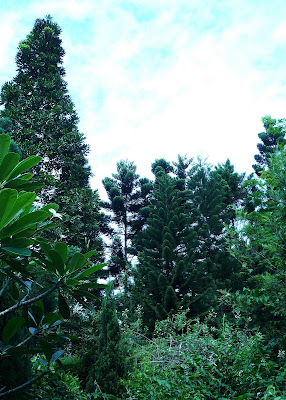


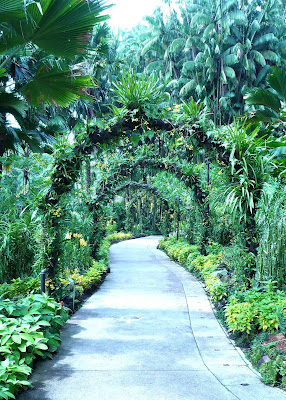

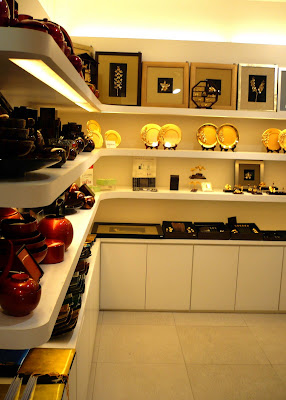
After a looong tour of the Botanic Gardens, you'd end up at this gift shop near the entrance which sells orchids dipped in gold. Perfect for framing or as jewelry accents. Other products are also available.


I forgot to do the standard pose at the Orchid Garden Gate. When in this humid city, it helps to bring with you a HUGE bottle of water and, well, in my case, a fan. Very helpful. After this, you can exit the Garden via the long paseo as seen below passing by another lake (the Swan Lake). The gate at the end of it exits at Bukit Timah Road, if I'm not mistaken.




Swan Lake. The beautiful sculpture called Flight of Swans (for obvious reasons) was installed in May of 2006.

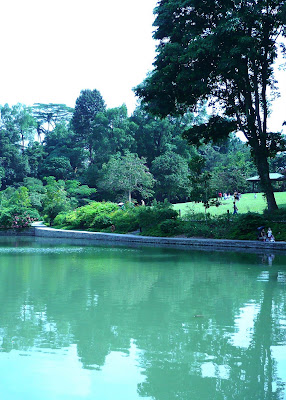



And with that we end our tour of the National Orchid Garden at the Singapore Botanic Gardens. :-)
For more information, please contact:
Visitor Services
Singapore Botanic Gardens
1 Cluny Road, Singapore 259569
Telephone: 6471 7138/6471 7361
Fax: 6473 7983
Email: NPARKS_SBG_Visitor_Services@NPARKS.GOV.SG





